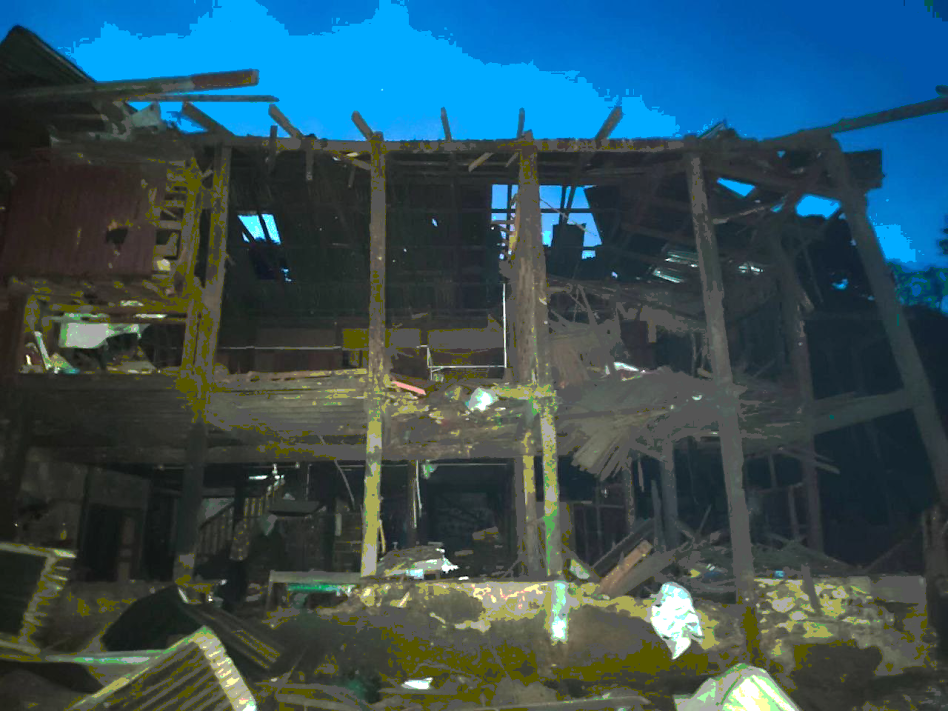Myanmar Spring Chronicle – August 10 Viewpoint
(MoeMaKa, August 11, 2025):
Daily Airstrikes Continue Claiming Lives; Junta Reaches Out to UWSA for Improved Relations
On the night of August 10, Myanmar military forces launched airstrikes on two locations within KNU/KNLA-controlled Brigade 7 territory in Kayin State, causing injuries and the destruction of homes and shops, according to initial reports.
The airstrikes targeted Maw Pya Kho and Thee Bay Hta villages in Myawaddy District. Around 20 bombs were dropped by a military Y-12 aircraft. This attack occurred just two days before Karen Martyrs’ Day on August 12 — a day annually commemorated to honor the death of Saw Ba U Gyi, a key figure in the Karen armed struggle.
It is suspected that the junta intentionally targeted KNU headquarters territory in advance of Karen Martyrs’ Day, possibly to intimidate or disrupt planned commemorations. It also appears to be retaliation, as KNU/KNLA forces have been steadily capturing military outposts along the Karen–Thai border in recent months.
The timing of this attack aligns with the military’s historical pattern of launching symbolic strikes on significant dates tied to ethnic armed groups. It may have been a calculated move to warn or deter further KNU offensives and territorial control, especially since the group has gained strongholds not only in Kayin State but also parts of Tanintharyi, Mon State, and eastern Bago Region.
On the ground, several Karen armed groups remain active with divergent goals and strategies, including KTLA (led by Saw Nel Dar Mya), DKBA (Klo Htoo Baw faction), KNU/KNLA (PC faction), and the Kawthoolei Army (formerly BGF). These varying agendas have historically been exploited by the junta, which uses a strategy of co-optation — bringing some groups to its side to isolate and weaken others.
The airstrikes on known KNU command zones are likely aimed at shaping political conditions in anticipation of elections or potential ceasefire negotiations, positioning the junta to disrupt or neutralize stronghold resistance ahead of those events.
At the same time, the junta appears to be strengthening backchannel ties with the United Wa State Army (UWSA) in eastern Shan State. Recently, the Shan State Chief Minister, along with military commanders from the Triangle Region and police officials, visited Pangkham (UWSA headquarters). The official reason given was to discuss regional development on behalf of the National Defense and Security Council.
The UWSA governs one of the most developed autonomous regions in Myanmar and has done so for decades without accepting governance or financial support from Naypyitaw. Since the 1989 collapse of the CPB (Communist Party of Burma), the UWSA has operated independently under a ceasefire and special region status.
In 2023, when the junta lost control of towns like Hopang and Panlong, the MNDAA (Kokang group) handed over those territories to the UWSA. Over the past year, the junta has not clashed with UWSA and has, in fact, used it as a mediator in certain situations involving the MNDAA and surrenders of junta officers.
Even during the later stages of Operation 1027, there have been no significant armed clashes between the UWSA and the junta. The junta’s move to send its former military operations commander in Northern Shan (now Shan State CM) to meet UWSA may suggest an intent to position him as a future intermediary between the junta and other ethnic armed groups in northern, eastern, and southern Shan State.

